
Multi-site ecommerce and your online strategy
If you’re an online or omni-channel retailer who is looking to grow online revenues efficiently, differentiate your brands, or enter new markets, then multi-channel technology should be at the very heart of your ecommerce strategy.
Multi-channel commerce strategies are proven to grow online revenues, increase market share & penetration whilst building competitive advantage. Achieving impressive ROI for pure play online vendors, omni-channel retailers, manufacturers, wholesalers and suppliers, multi-channel technology enables website owners to effectively increase their sales whilst lowering the overall ownership cost of their ecommerce solution. However, not all ecommerce platforms support multiple sites from the same installation, some have a limit on the number of sites, whilst some won't support different business models.
Following a multi-channel strategy essentially involves setting up multiple websites for international markets, different business models (B2B, D2C, B2C etc..), or for separate brands, each potentially with their own set of products geared towards specific markets, countries, or niches.
Is multi-channel commerce for you?
Having multiple ecommerce websites can bring significant benefits to virtually any online business. It is how a business approaches a multi-site strategy that varies, as there are often both commercial and political considerations. Below are some typical scenarios that we have come across when talking to businesses about a multi-site solution:
- Merchants looking to sell internationally through multiple sites
- Businesses who want to differentiate their brands
- Vendors who are looking to introduce new product lines, or target new markets, whilst protecting their existing brand
- Businesses who want to use a central platform whilst allowing multiple sites to retain their independence and anonymity.
- Online retailers with existing sites that are built on different platforms, or are hosted separately, looking to consolidate them onto one central platform
- Businesses looking to break out specific product groups to target particular niches
- Retail businesses looking to launch a B2B offering
- B2B businesses looking to launch a Retail or D2C offering
- Franchises looking to roll out a number of sites for members whilst retaining central control
- Groups of businesses, and businesses with multiple divisions that want a single system
Planning for multiple ecommerce websites
It’s important for vendors to plan their offerings carefully and communicate them to the customer, thinking through each site individually. Ensuring that your site appeals to your target market is fundamental and has many contributing factors. For each market / niche website merchants should intelligently tailor SEO, branding, site design, product set, and promotions to engage with their target market more effectively.
For example, you may currently sell orders into the trade where shipments are large & less frequent (they could even go straight from the manufacturer so you never even see them) but then decide to launch a D2C offering. Do you have the resources and structure to fulfil smaller shipments? Do you have warehousing, packaging, customer service, returns capabilities, payment options, marketing, credit/debit card payment options etc... all in place to support that launch and make it a success?
Identifying markets and niches
Whether you are looking to launch a small simple site, or a larger, more complex offering, identifying your website’s target market from the start is a crucial step in business planning. Successful online businesses put a lot of effort into focusing on specific target markets. In most cases a gap in the market has usually been spotted, and researched, by a business to assess their suitability in filling it. Building a demographic and/or psychographic profile of their target market(s) can help vendors to refine their targeting, looking at details such as: age groups, gender, interests, geographies and income.
Choosing your products
Vendors that have an ecommerce site already could look to break out suitable products, ranges or categories that are buried in their current site and struggle to be found in search engines, and then include them in a second more-focused website. This still allows retailers to centrally manage their product database and simply set products to appear on the appropriate sites.
Search engine optimisation (SEO)
Having multiple sites gives merchants a fantastic opportunity to really focus their SEO, allowing them to effectively target specific keywords and phrases relating to their product range. Breaking out groups of products from your existing product catalogue into a separate site can improve your search engine visibility and ranking, by essentially becoming a specialist or focused website for those products. Targeting niche markets often means that generally there is less competition, making it easier to achieve higher rankings for relevant phrases more quickly.
It can also have a huge effect when delivering multiple international sites. It’s best to avoid using cookies or browser settings to try and dynamically adjust your pages as it makes it much harder for search engines to crawl and index those variations. So we’d suggest using a proper international structure of which there are three main approaches to consider.
- Different subfolders with gTLD (example.com/en-ca and examples.com/fr-ca)
- Different, country-specific domains – ccTLDs (example.co.uk and example.com)
- Different subdomains with gTLD (uk.example.com and fr.example.com)
Which option you choose can greatly affect your SEO and thus the effectiveness of your site. The option may depend on your budget, resources, objectives, business structure, and strategy as some will require more work and expensive than others..
Branding and site design
Branding and website design form part of the overall user experience and is one of the key areas that online retailers can differentiate themselves from their competitors. Tailoring your brand identity and website design helps ensure that you stand out from the crowd, effectively engaging your target markets.
Some ecommerce platforms can be very restricted when it comes to designing sites for multiple brands as they are limited by pre-defined themes and templates meaning sites often look very similar or the same, and functionality is a match too.
Payment Options
Flexible payment options are always an important aspect of ecommerce sites for both customer satisfaction and conversions. How any mix of ecommerce sites is structured may well affect the payment options you want or need to offer. For example, most retail sites will take debit/credit cards but more recently many sites have expanded into offering additional payment methods such as PayPal, Apple Pay, Google etc... alongside buy now pay later options like Klarna. Now, B2B sites will predominantly deal with credit accounts, B.A.C.S., and proforma invoice payments alongside credit/debit cards, but many of them have also expanded to include specific B2B focused buy now pay later services such as DEKO pay, V12, or Hokodo.
Another consideration for multi-channel commerce is dealing with international sites, both B2C and B2B. Different countries are culturally different when it comes to online payments. so, whilst credit/debit card payments are the most common in the UK, the Dutch heavily favour the national payment method iDeal and the Germans are most commonly invoiced online and then pay using B.A.C.S. Tailoring payment options to your business model or market is another key factor in delivering successful multi-channel commerce operations. Not all platforms will support these different options.
Fulfilment
Much like payment options, shipping options are another important consideration when adopting a multi-channel strategy. Different business models may adopt different shipping methods which need to be reflected via your stores. Are you a B2B business suddenly trying to ship direct to consumers, and have you considered the implications of this? Do different customers or markets expect different fulfilment options? Do you have multiple warehouses? Can you move stock throughout your business easily? Do you offer Click & Collect/Reserve to stores or trade counters?
Marketing & Promotions
Alongside the suitability of your product range to certain marketing campaigns and promotions, it's also important to consider your market which can differ greatly between sites under a multi-channel approach. What works for one business might not for another. Loyalty schemes won't work if you're selling white goods, or furniture but could be a huge success for FMCG. Subscriptions are unlikely to be used for trade customers but are ideal for regularly ordered items.
Cost effective multi-channel commerce solutions
Staying in control of costs whilst delivering an exceptional user experience is often the challenge faced by online retailers. By selecting the right ecommerce provider and platform, vendors can achieve a scalable multi-site ecommerce solution which is cost effective whilst still delivering an excellent experience to their customers.
A sub-niche website can have:
- Different or same design (or mixture of)
- Different or same functionality and layout (or mixture of)
- Different or shared content e.g. images, content, promotions, products
- Be in one or more languages
- Different or same payment gateway
- Different or same tax and shipping algorithms
- Administrator access can be set system wide, site-specific and/or sections within
Sub-niche website requirements can be loosely categorised as one of the following:
Mirror
Re-using the same templates and existing functionality with some minor stylesheet changes. For example, Healthspan Elite have multiple international sites all with the same design with only minor changes for different languages and currencies.
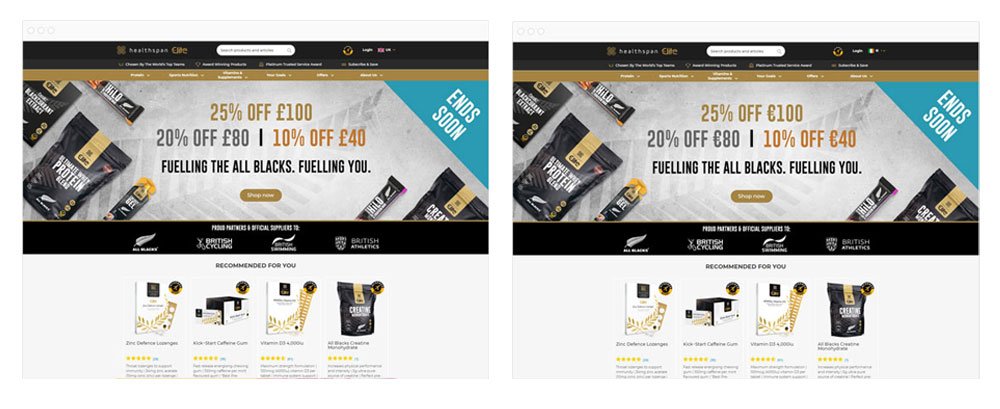
Mix
Some different templates and some tweaks to the site’s functionality. For example Sass & Belle have some subtle differences between their retail and B2B sites both in design and functionality
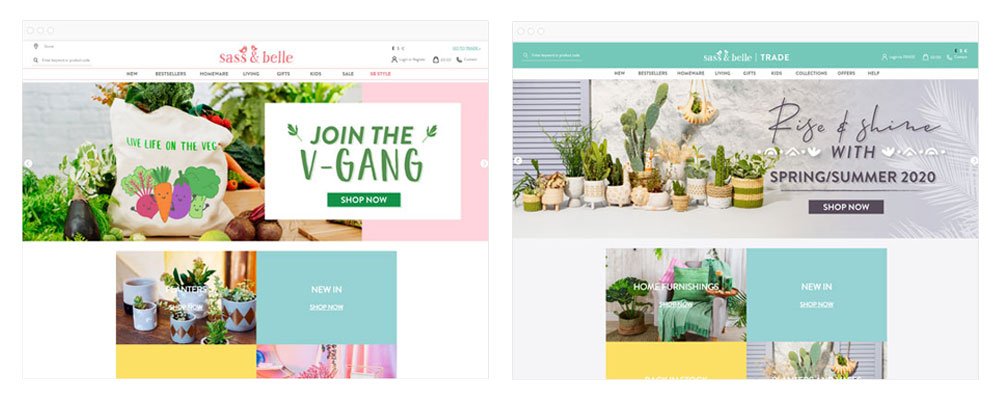
Unique
Unique set of templates giving the subsequent sites a completely different look and feel with unique functionality and rules. For example Pet Family have a number of different brands across both D2C and B2B all running from a single system. They all carry unique designs dependant on the brand.
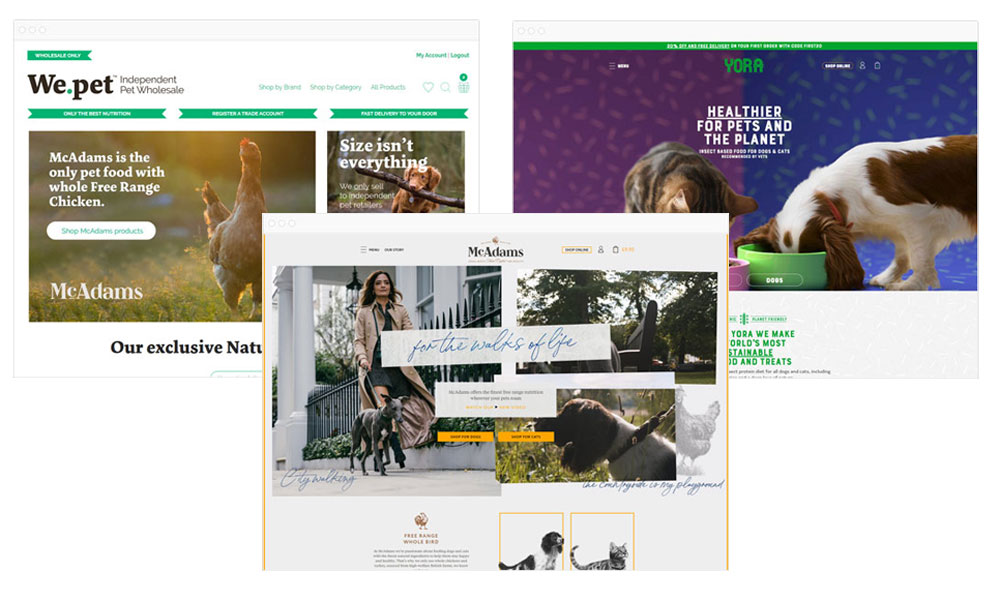
Each option varies in the cost and time it takes to implement. Generally speaking the more complex and unique a sub-niche website is, the larger the cost and time to implement.
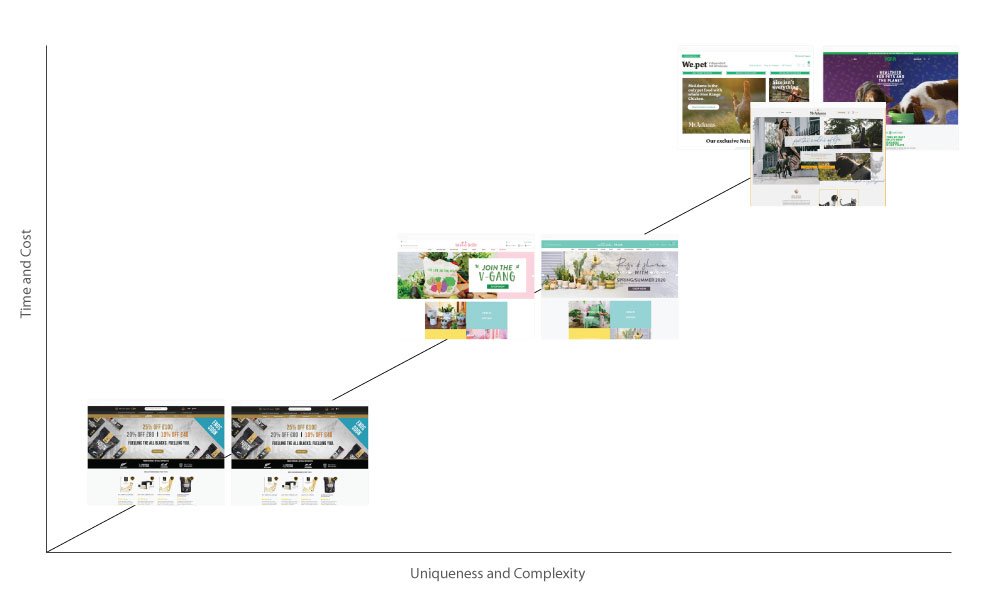
Reducing your overall operation costs
If you’re already managing multiple sites and they are either running through different platforms or are hosted separately, or both, then centralising them to be managed from a single platform and the same hosting environment can bring significant cost savings to your business.
One off build costs
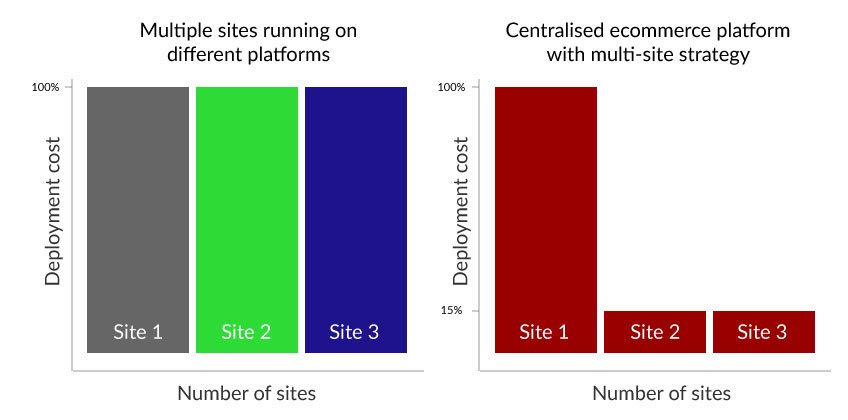
Ongoing hosting costs
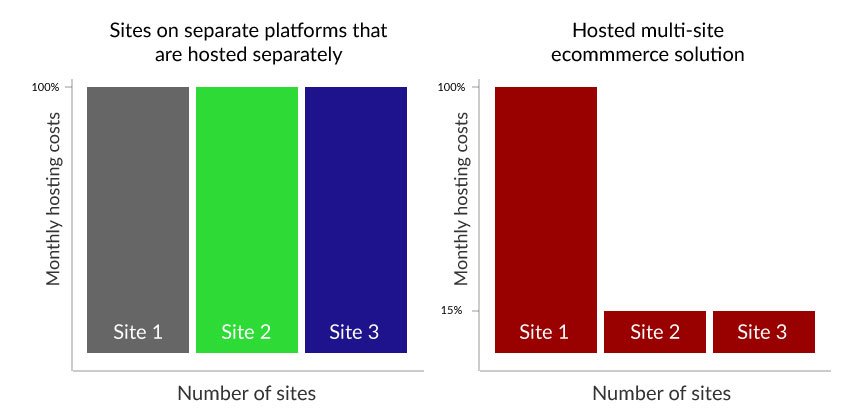
Conclusion
Creating multiple sites focused on a specific market is an excellent way of acquiring new customers and increasing your sales, market reach and penetration, as well as developing a significant advantage over your rivals. For businesses looking to implement a multi-channel solution it is important to note that not all ecommerce platforms can support multiple sites in the same way, and some that claim to do so, support that requirement with varying degrees of success.
Ecommerce platforms that have been built from the ground up with running multiple sites in mind offer merchants looking at a multi-channel solution the greatest amount of flexibility. More flexibility means more options for the vendor and ultimately a better solution that has longevity and scalability. Merchants need to ensure that they’re supported and empowered by both platform and provider to drive their business forward, following their online strategy and achieving their goals.
